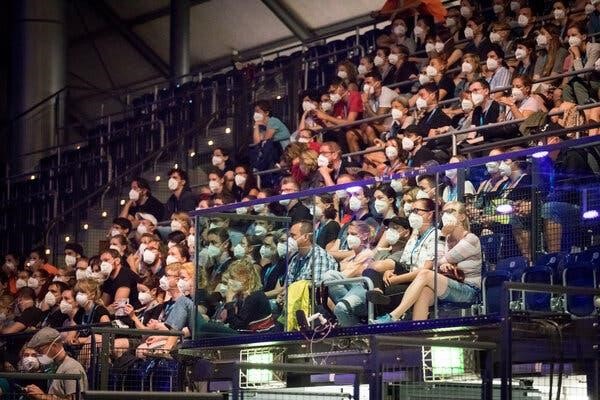By Natalie Taylor
In my Aug. 26, 2020, article, I spoke about Restart-19, a German study whereby 1,500 volunteers were monitored for COVID-19 transmission after attending an indoor concert. All were pre-tested for COVID, had their temperatures taken, and used a hand disinfectant laced with fluorescent dye for tracing. Three indoor concerts were held in a single day, each with a different level of health measures, i.e., participants were distanced, partially distanced, and strictly distanced. Jet nozzles sent fresh air into the arena, and fresh air was sucked in from the rooftop.
Why even bother with such events? For many in the audience, participation in the study offered the experience of finally going to a concert after months of deprivation. One participant explained that listening to music at home can’t replicate the sense of togetherness and spontaneity at a live music event, and for artists and organizers, “there is a passion and love there.”
The results have now been published online, and they offer a glimmer of hope for such events in the future even before mass vaccinations are available. I am careful to point out that this is not conclusive, and the results may not stand up to full scrutiny. But some data highlight the importance of measures that have been touted by world health organizations.
The test suggests that indoor concerts have low potential rates of infection as long as they are well ventilated, follow strict hygiene protocols, and limit their attendance. One factor found to minimize the density of aerosols was regular air circulation and social distancing. Although the researchers knew that ventilation was important, they did not realize how great a factor it was in dissolving aerosols in the air. They also found that the longest contacts between audience members occurred during breaks.
The German researchers have followed up by recommending certain safety measures for live events—installing new ventilation technology that exchanges air effectively and regularly, seated food and drink breaks, making masks compulsory, and directing attendees through multiple entrances.
These findings should be taken with cautious optimism. If masks do indeed work for large gatherings, it would be excellent news for organizers of large outdoor events. But this is only one study, and we need to watch the results with fingers tightly crossed. More such tests need to be conducted and peer reviewed, and researchers in other countries are working on similar studies. They hope to find the right protocols for a safe way to reopen concerts and other large-scale events even with the pandemic still present. All these projects are important in paving a new path for future live events. However, they can certainly be used for smaller gatherings as well. The most important takeaway for any get-togethers is to wear masks, socially distance, and provide good air circulation either by gathering outdoors or opening as many doors and windows as possible if inside. These are measures that have been promoted by competent medical experts all along. Listen to science.

